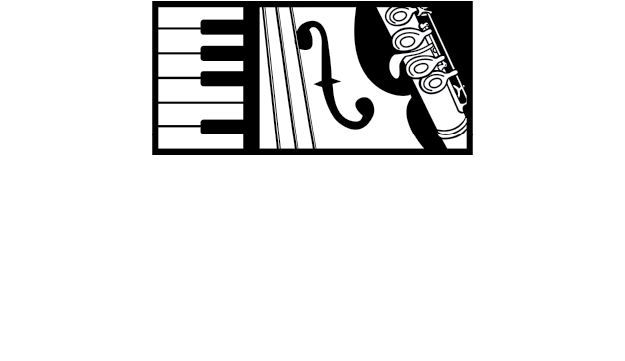Program Notes - Ode to Napoleon Buonaparte (Arnold Schoenberg)
Schoenberg's Evolution
Arnold Schoenberg’s (1874–1951) setting of Byron’s Ode to Napoleon Buonaparte in his Op. 41 (1942) was composed forty-four years after his Zwei Gesänge Op. 1 of 1898. Those four and a half decades saw seismic changes in many composers’ harmonic languages, conceptions of and approaches to organizing musical form, and explorations of the aesthetic goals of art. Schoenberg was among the boldest in accepting what he viewed as the necessity of change.
Schoenberg came of age in the artistic milieu of late-19th–early 20th-century Vienna, in the artistic circle dominated by writer and Kultur-kritik Karl Kraus and the architect Adolf Loos. These creative thinkers shared, in the words of musicologist Malcolm MacDonald, a “positive but inevitably abrasive view of art as a means of moral change, ethical rather than aesthetic, founded on the traditions, both exhortatory and satirical, of European humanism” (MacDonald, 25). Art was not simply to be enjoyed; it serves as an important mode of our own questioning and improvement of ourselves and our societies. And this required artists to move into new, even uncomfortable, terrain in order to meet head-on and bravely what was “required” of them by history’s ineluctable forces.
For his part, Schoenberg was always a “reluctant revolutionary,” having deep respect and love for the musical tradition he inherited, yet knowing that those very feelings impelled him to move forward into new territory. In 1915–1916, Schoenberg served a year during World War I in army garrison duty. One day an officer asked him if he was “that controversial composer,” and he purportedly replied: “Well sir, it’s like this: Somebody had to be, and nobody else wanted to, so I took on the job myself.” Schoenberg “knew that comparatively few people would understand his music in his own time, and desired none of the isolation and abuse that were the inevitable result. But since an inner compulsion drove him beyond the bounds of the familiar, his artistic conscience would not allow him to renounce the new territory thus gained. […] he would not compromise the quality or the integrity of his ideas” (MacDonald, 102).
Until 1909, Schoenberg’s music had been late-period tonal, i.e. based on the major/minor key system common to Western “classical” music since the 17th century, albeit ever-expanded to include more and more use of the full chromatic scale (all twelve notes of the piano keyboard; closely related to chroma, or intensity of color). Schoenberg greatly admired the richly chromatic language of Wagner, Richard Strauss, Gustav Mahler and other mid–late 19th-century composers, and his earliest works continue that practice (his Verklärte Nacht Op. 4 of 1899, heard on the TCMS series in its 2022–23 season, is one such work) while pushing the language ever closer to the “edge” of complete chromaticism.
By the time of Schoenberg’s String Quartet No. 2 Op. 10 (1907–08), which includes a vocal soprano in the last two movements, listeners and critics became increasingly perplexed by Schoenberg’s new harmonies, and doubtless the opening of Stefan George’s poem Entrückung (Rapture) set in the work’s fourth movement — “I feel the air of another planet” — captured for them something important about Schoenberg’s evolving and strange musical language. (When asked, though, why he no longer composed music like Verklärte Nacht, he would reply: “I still do, but nobody notices.”)
Starting in 1909 and continuing through several especially prolific years, most of Schoenberg’s works ceased utterly to be organized around any key center at all, instead being grounded on a very intuitively arrived-at chromatic harmony. In a 1911 letter to the Russian painter Wassily Kandinsky, Schoenberg wrote of the “elimination of the conscious will in art” and declared that “art belongs to the unconscious! (Auner, 89). That same year he wrote to the composer Ferruccio Busoni: “I strive for: complete liberation from all forms, from all symbols of cohesion and of logic” (Auner, 70). The Three Piano Pieces Op. 11 of 1909 is the first consistently chromatic work to evince Schoenberg’s fully intuitive approach, and others from this remarkably fertile period include The Book of the Hanging Gardens Op 15 (1908–09), Five Orchestral Pieces Op. 16 (1909), and the remarkable monodrama Erwartung Op. 17 (1909) for soprano and orchestra.
During the late-1910s and early 1920s, alongside disruptions due to the ongoing war, Schoenberg grew dissatisfied with a purely intuitive approach to composing, and began seeking what he described as “coherence-forming factors.” He now sought a method of working with the full chromatic collection of notes that would result in more consistency and comprehensibility to the listener, and one which would allow for works of greater scale than that of many of his “freely” approached works of recent years.
In 1923 Schoenberg gathered his students and friends to explain a new method he was developing, which he discussed in an unsigned and undated manuscript titled “Composition with Twelve Tones,” to which he later appended “related only to one another.” His idea was to assemble the chromatic notes into a basic shape (Grundgestalt) which contained the basis for all harmonic combinations and melodic development in a work, akin to those of tonal organization. He wrote many of his greatest works in this manner, including the String Quartets 3 Op. 30 (1927) and 4 Op. 37 (1936), the Variations for Orchestra Op. 31 (1926–28), the Violin Concerto Op. 36 (1934–36), and the Piano Concerto Op. 42 (1942).
As Schoenberg settled into his newfound, more coherent chromatic method, he also began occasionally to compose thoroughly tonal works, including the Chamber Symphony No. 2 Op. 38 (1906/39) and the Theme and Variations Op. 43 (1943) in both band and orchestra versions. He never lost his admiration of the great composers and body of works from earlier centuries.
Exile, War, and Ode to Napoleon Buonaparte
In 1933, Schoenberg, like many other Europeans — Jews most especially — decided to flee the newly installed Nazi regime and immigrate to the U.S. For the first year he lived in New York City and commuted to Boston to teach at the Malkin Conservatory, but quickly decided that the Northeastern winter was not amenable to his health. The following year he moved to Hollywood, CA, where he lived for the remainder of his life.
Schoenberg’s former-student-turned-musical-assistant Leonard Stein spent the afternoon of December 7, 1941, at the Schoenberg’s home, where they discussed the implications of the attack on Pearl Harbor. The following day, President Franklin Roosevelt's "date which shall live in infamy" speech marked the United States' entry into World War Il. Stein later surmised that those events were a significant motivating force behind Schoenberg’s soon-to-be-realized urge to compose a musical protest against fascism.
In early 1942, Schoenberg first encountered Lord Byron’s Ode to Napoleon Buonaparte, written in 1814 following Napoleon’s abdication and expressing through the mode of sarcasm his deep scorn for the deposed leader. The poem begins scathingly: 'TIS done — but yesterday a King! / And arm'd with Kings to strive — / And now thou art a nameless thing,” and never lets up in its derision. Malcolm MacDonald aptly describes the poem as “a tour-de-force of unbridled sarcasm, kindled by disgust at Napoleon’s capitulation in 1814” (Macdonald, 220). Such was Byron’s scorn that he even deliberately used the original Italian spelling — Buonaparte — of Napoleon’s name to highlight the fraud of adopting a Frenchified spelling when Napoleon was, in fact, Corsican.
Several overlapping motives seem to underlie Schoenberg’s choice of text for his “protest work.” Firstly, it would be natural enough for any European émigré — but especially a Jew — escaping the Nazis to feel strongly about their adopted America having entered into the war after having received so many terrifying reports from friends and loved ones back in their homelands. For many artists, the impulse to express outrage at fascism through their work was strong. Indeed, Schoenberg later wrote in an undated brief essay on composing his Ode setting: “I knew it was the moral duty of intelligentsia to take a stand against tyranny” (Auner, 291).
Further, Schoenberg admired Byron for having financially supported and fought (and lost his life) in the Greek Wars of Independence during the early 1820s. Finally, in encountering Byron’s satirical and ironically titled Ode, the spark was lit. He saw in the poem an expression of scorn that could serve well to obliquely condemn Hitler, and he very quickly decided to compose a setting of it for string quartet, piano, and narrator, begun March 12 and completed on July 12, 1942.
Only once before, in the Kol Nidre Op. 39 (1938), had Schoenberg set a text in his newly adopted English (mixed with Hebrew). It is reasonable to suppose that accepting the challenge of setting Byron’s text, in addition to serving his expressive needs, may well also have been an intentional act of affiliation — a declaration of allegiance to the country in which he had recently become a naturalized citizen.
Byron's poem is in nineteen nine-line verses that have an intricate rhyme scheme: ABABCCBDD. (The last three verses were added seven years after Byron's death in the 1831 edition brought out by Thomas Moore.) Schoenberg’s setting is through-composed, avoiding literal repetitions of sections, and without any clear traditional formal organization. He largely ignores the rhyming and structure of the text, regrouping the poetic lines and cutting across the boundaries of Byron’s verses in his musical phrases and sections. He reflects the text’s meaning instead through an intense and nervous musical surface filled with marked changes in dynamics, tempo, and register, and saturated with melodic and rhythmic variety.
The narrator reads in an unusual notation that specifies the rhythm very precisely down to small divisions of the beat, written on a single-line staff (as opposed to the traditional 5-line staff on which most pitched music is notated). The location of notes on, above, and below the staff designate higher-and-lower inflections of the (vague, spoken) pitch of the narrator’s voice. Harvey Sachs has suggested that Schoenberg devised this unusual vocal part because he wanted the speaker to achieve "the number of shades, essential to express one hundred and seventy kinds of derision, sarcasm, hatred, ridicule, contempt, condemnation, etc., which I tried to portray in my music” (Sachs, 183). Leonard Stein suggests that Schoenberg’s model for the declamation of the text may have been based on the oratorical style of Winston Churchill (Auner, 290–291).
The final verse invokes George Washington, characterizing him as the “Cincinnatus of the West,” a reference to the Roman leader Lucius Quinctius Cincinnatus, historically admired for his selfless leadership, civic virtue, and service to the greater good. Schoenberg may well have intended another second layer of meaning here, evoking Franklin D. Roosevelt as the counterpart and adversary to Hitler and a symbol of democracy.
Schoenberg’s Ode was composed using his twelve-tone method, but in a manner very different from most such works of his. His chosen formation of the ordered chromatic scale partitions into major and minor triads, which give the work a whiff of tonal familiarity without ever actually being in a key in the proper and traditional sense. Hearing the old and familiar in this newer, stranger context is inherently jarring, even disturbing.
The work is permeated with motivic references to Beethoven's Fifth Symphony and the French national anthem, "La Marseillaise." Especially emphasized is a “sort-of E-flat major,” and the piece ends strikingly on a pure E-flat major triad which deliberately recalls Beethoven's Third Symphony, “Eroica,” first composed as an homage to Napoleon when Beethoven still thought of him as a heroic figure fighting for freedom, and ever after used by composers as the key of the heroic. Composer Allen Shawn has noted that “in the context of this bitter piece, which uses the Byron text to rage against Hitler, the major triad at the end has all the nicety of a clenched fist” (Shawn, 258).
Schoenberg was not alone in the early 1940s in using the modes of satire and sarcasm to critique and belittle Hitler. Charlie Chaplin’s 1940 film The Great Dictator is another striking example, and one with which Schoenberg was quite familiar, having visited Chaplin (who was a regular tennis partner of Schoenberg’s) on the film set. But both Chaplin and Schoenberg were soon to regret having had a humorous undertone in their anti-Hitler works.
It’s a deep and terrible historical irony that Schoenberg completed Ode on June 12, 1942, the very day on which Joseph Goebbels announced the goal of extinguishing all Jews in Europe. As the reports of the horrors and shocking inhumanity of the Holocaust emerged from the concentration camps across Europe, it became clear that laughter of any kind, no matter how derisive, was no longer morally tenable. In 1947 Schoenberg wrote the text and composed the music of his A Survivor from Warsaw Op. 46, for narrator, chorus, and orchestra. The work faces unabashedly the true depth of human depravity enabled by fascism.
Ode to Napoleon Buonaparte holds an unusual position in Schoenberg’s oeuvre: reminiscent in its intensity and unsettling quality of his earlier Expressionist works yet more highly structured harmonically by the use of his twelve-tone method; unusual in referencing other musical works rather than remaining hermetically contained; chromatic, yet with tonal references; and satirical in its message (only his Three Satires Op. 28 (1925–26) stands with it in that regard).
Composed at an historical moment when humor seemed appropriate and possibly effective in assailing a political ideology that betrayed humanity, by a composer thoughtful enough to realize soon afterwards that humor wasn’t sufficient to combat such evil, Ode stands as a scintillating lighthouse attempting to confront and guide us through one of humanity’s darkest moments.
Notes by Judd Danby
WORKS CITED
Auner, Joseph. A Schoenberg Reader: documents of a life. New Haven: Yale University Press, 2003.
MacDonald, Malcolm. Schoenberg. The Master Musicians. New York: Oxford University Press, 2008.
Sachs, Harvey. Schoenberg: Why He Matters. New York: Liveright Publishing Corp., 2023.
Shawn, Allen. Arnold Schoenberg’s Journey. New York: Farrar, Straus and Giroux, 2002.








